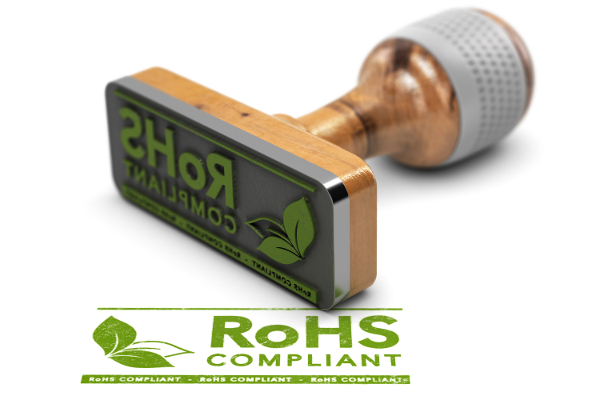
Health and safety restrictions are full of acronyms, and it can be difficult to keep track of what they all mean. However, they’re crucial in ensuring that your business, workplace and products are up to scratch and in line with the law.
If you work with and around electrical and electronic equipment (EEE), you’ve probably heard of RoHS. But what is RoHS, what is ‘RoHS compliant’, and what does this mean for your products? Below, we’ll explain it all.
What Is The RoHS Directive?
RoHS stands for the ‘Restriction of Hazardous Substances’ Directive. Put simply, it’s a law put in place in the EU that restricts the use of particular hazardous substances.
At present, the RoHS 3 directive limits the use of ten substances:
- Bis(2-ethylhexyl) phthalate (DEHP)
- Butyl benzyl phthalate (BBP)
- Cadmium
- Dibutyl phthalate (DBP)
- Di isobutyl phthalate (DIBP)
- Hexavalent chromium
- Lead
- Mercury
- Polybrominated biphenyls (PBB)
- Polybrominated diphenyl ethers (PBDE)
Each of these substances has a maximum allowance of 0.1% by weight, with the exception of cadmium which is capped at 0.01%.
So, what does RoHS compliant mean? It means that a product adheres to all limits listed above, as put in place by this law. Unless it has a specific exemption, all electrical products must comply with the RoHS directive.
Why Was The RoHS Directive Implemented?
Since electronics manufacturing began, many different chemicals and materials have been trialled in their construction with varying degrees of success and safety. As a result, the RoHS was brought in to limit the use of such dangerous materials to improve the safety of both humans and the environment.
The RoHS directive was founded in 2002, and since then has had three amendments to add more substances to the restricted list. Originally, there were only six substances. Now, there are ten, after four phthalates (DEHP, BBP, DBP and DIBP) were added to the list in 2015 under RoHS 2.
The RoHS directive goes hand-in-hand with WEEE (Waste Electrical and Electronic Equipment), which regulates the disposal of the equipment that the RoHS restricts.
What Does RoHS Apply to?
The limitations of the RoHS apply to electrical equipment. In RoHS 1, this included:
- Automatic dispensers
- Computing and communications equipment
- Consumer electronics
- Large household appliances
- Lighting
- Power tools
- Small household appliances
- Toys and games
RoHS 2 and 3 expanded upon what was covered and now applies to all electrical and electronic equipment (EEE) including medical devices, industrial monitoring and control instruments, and even cables and spare parts. Unless you have an explicit exemption, assume that you need to comply.
Exclusions from RoHS
RoHS 2 (2011) lists a few exclusions to the directive, which are as follows:
- (Most) automotive equipment
- A small amount of medical devices
- Aerospace equipment
- Military equipment
- Products still under development or research
- Solar panels
Whether or not your product type is listed here, you should always check with the official regulations to find out if your product needs to comply with RoHS guidelines.
Exemptions are revised every five years to ensure that the RoHS directive is always up to date and to keep the use of dangerous materials limited in manufacturing.
How Can I Comply with RoHS?
You can have an employee write a compliance letter to prove your business adheres to the rules of RoHS. Alternatively, a third-party testing service can test your products to ensure everything is in line with the restrictions.
If you know that your business uses potentially hazardous substances, you should make it very clear which products do so. You can signify which items are subject to RoHS rules by labelling them with RoHS labels.
Start Your Compliance with Label Source
At Label Source, you can find all the labels your business needs to comply with health and safety regulations. Our RoHS labels will help you keep track of any potentially hazardous materials in your products.
Start browsing our selection of products today, or get in touch to find out more.